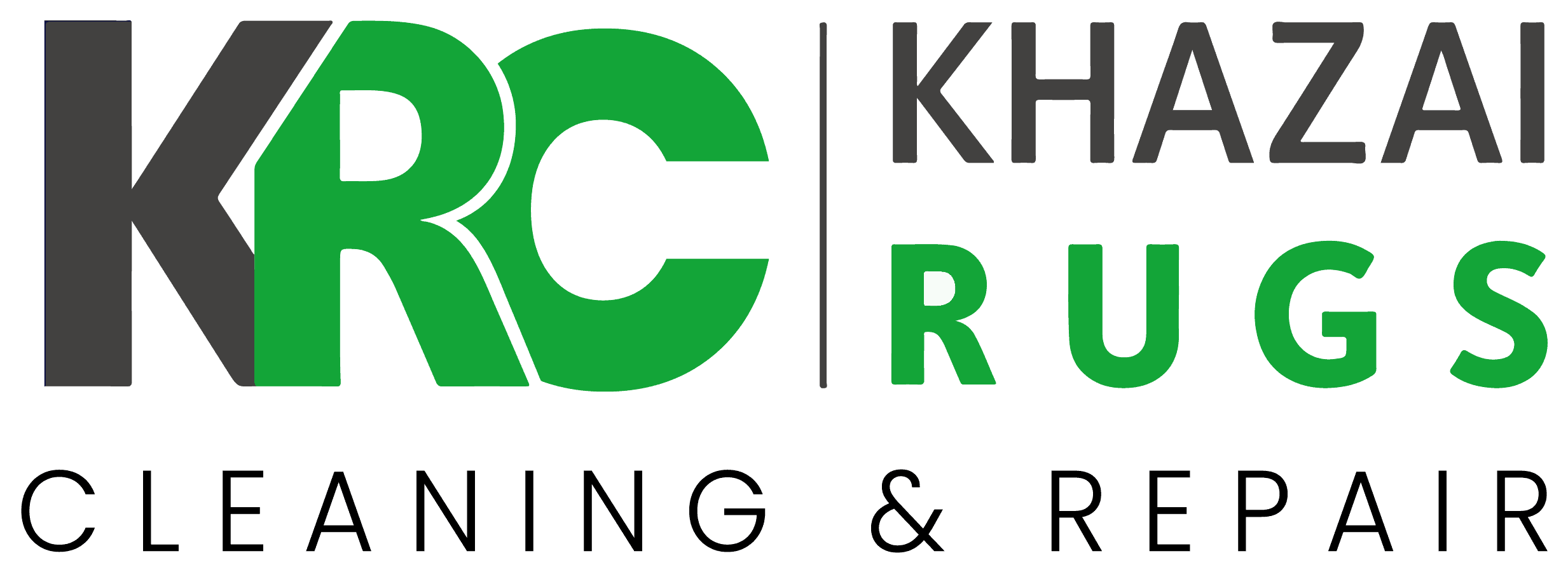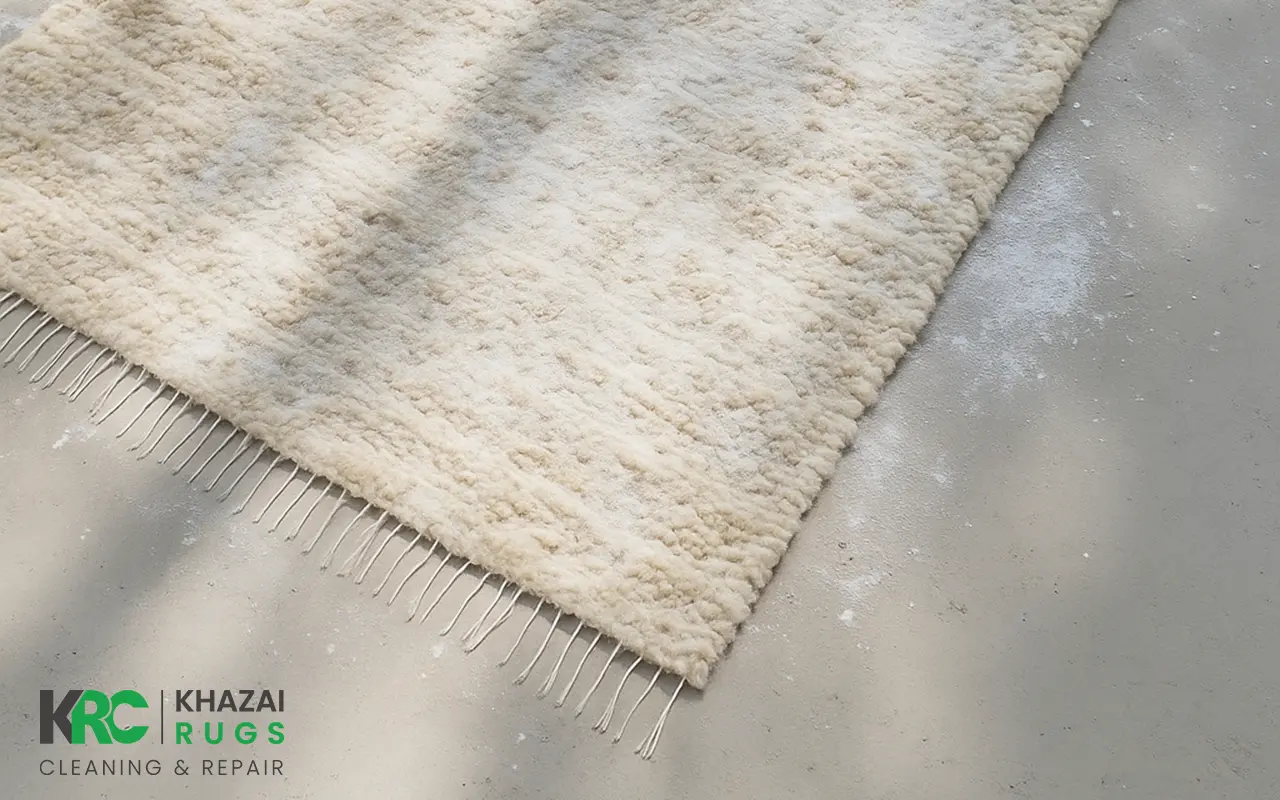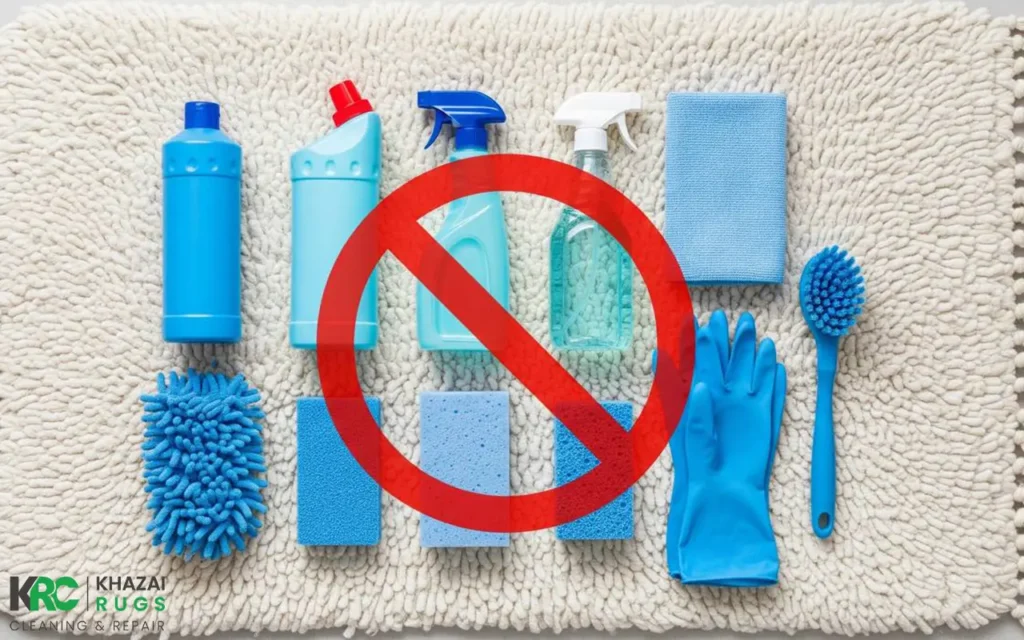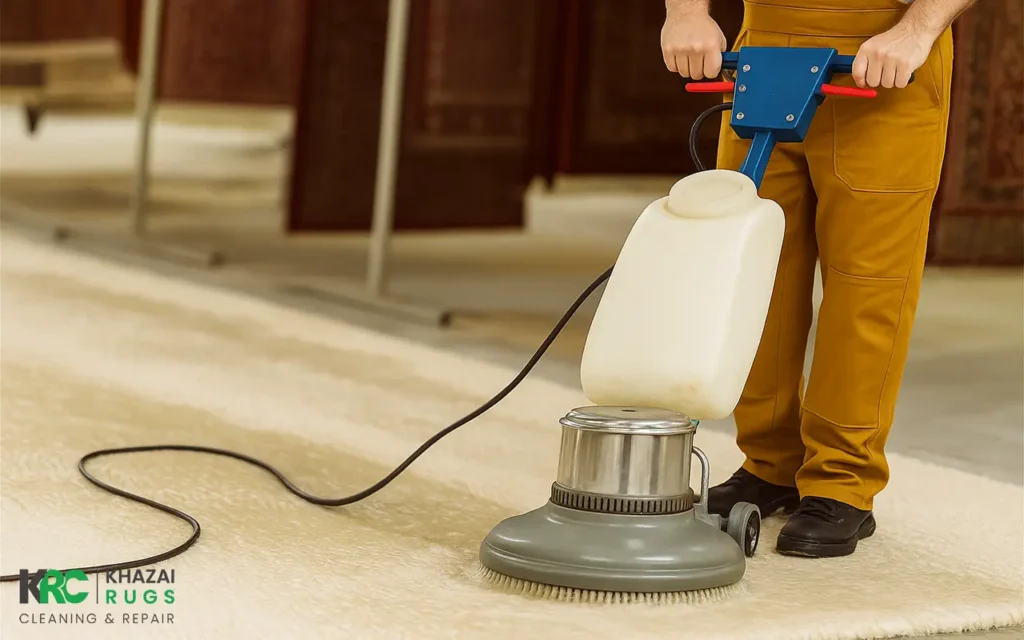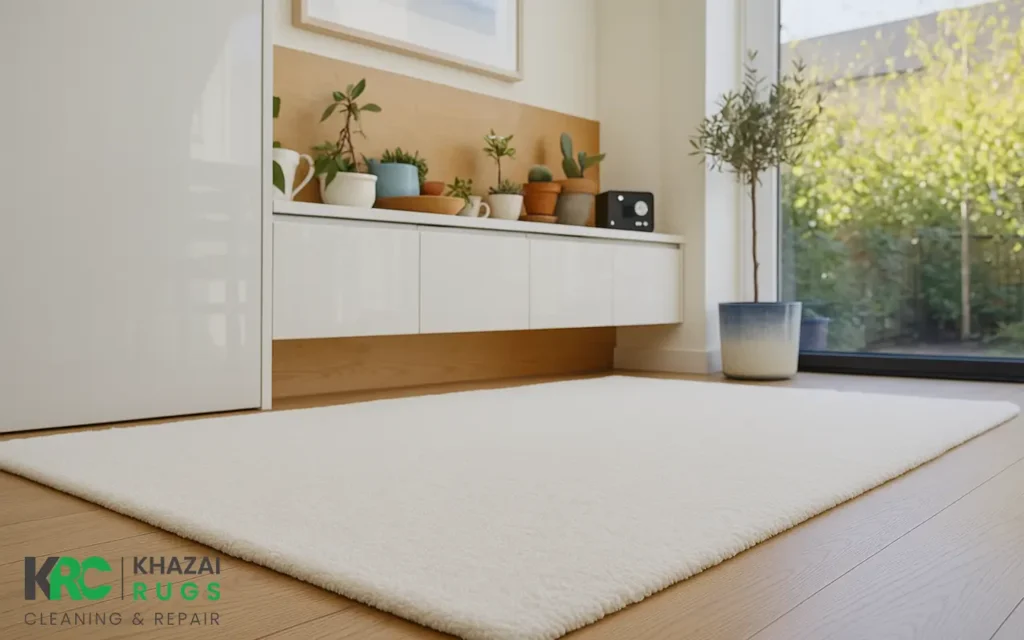Wool is tough in all the right ways and touchy in a few important ones. That mix is why rug cleaning for wool rugs deserves a careful, steady hand. In this guide, we keep it simple and real—what to do, what to avoid, how to spot cleaning cues, and how pros handle things. You’ll see clear steps, quick stories from the floor, and plain talk about professional vs DIY cleaning, wool rug maintenance, and cleaning natural fiber rugs. As Khazai Rug Cleaning, we use methods that respect fiber, color, and construction, from the first blot to the final dry. Let’s keep your wool soft, clean, and smiling for years. Let’s see what you should and shouldn’t do.
Why Rug Cleaning for Wool Rugs Requires Special Care
Wool behaves differently from cotton or synthetics. It carries lanolin, takes on moisture quickly, and reacts strongly to heat and high pH. That’s why rug cleaning for wool rugs is its own playbook. In the next notes, we cover why the fiber is gentle in some ways, stubborn in others, and how poor choices can leave lasting marks.
Using a Rug cleaning service for these delicate and special rugs is a must every once in a while.
Understanding the Delicate Nature of Wool Fibers
Wool is a protein fiber with a smooth outside and tiny scales that can fuzz if pushed too hard. It loves cool water and mild cleaners. That’s the backbone of cleaning natural fiber rugs. For wool rug maintenance, less is more: light agitation, careful blotting, and airflow you can feel. Treat the rug like a favorite sweater—clean, rinse, and dry with patience so the pile springs back the way it should.
How Improper Cleaning Can Damage Wool Rugs
Heat, strong alkalines, and rough tools are the triple threat. They can shift color, mat the pile, or push soil deeper. One sloppy pass can undo months of wool rug maintenance. Choosing professional vs DIY cleaning wisely matters: the wrong chemistry or too much moisture will haunt you later. If you’re unsure, remember this: rug cleaning for wool rugs is about control—water in, water out, fiber calm.
Dos of Rug Cleaning for Wool Rugs
The “do” list is about gentle steps and steady habits. We choose cooler water, pH-safe solutions, and moves that protect color. These next tips connect daily care with pro results, tying cleaning natural fiber rugs to home routines. They also highlight when a rug cleaning service earns its keep, so you can team up with us at the right moments.
Use Cold Water and Gentle Detergents
Cold or cool water keeps the dye stable and the pile relaxed. Mild, wool-friendly detergents let soil release without roughing up scales. This is the core of rug cleaning for wool rugs and the heart of cleaning natural fiber rugs. If a spot is stubborn, we step in as a rug cleaning service, using measured rinses and airflow so the fiber sighs with relief instead of clenching from heat.
Blot, Don’t Rub, When Treating Stains
Pressure is fine; friction isn’t. Blot from the outside toward the center to keep a spot contained. This small habit supports wool rug maintenance and keeps the pile smooth. For spills that fight back, our Rug Cleaning Service jumps in early, and we weigh professional vs DIY cleaning so you don’t turn a tiny mark into a big blur. Soft towels, cool water, short sessions—then stop and reassess.
Vacuum with the Right Settings and Attachments
Use a suction-only nozzle or raise the beater bar to the highest setting so it barely grazes. This reduces fuzzing and helps wool rug maintenance without stress. A slow, even pass along the pile direction is best. For deep soil, we pair controlled passes with spot care rooted in rug cleaning for wool rugs, letting airflow lift what bristles might mash.
Don’ts of Rug Cleaning for Wool Rugs
The “don’t” list saves you from dye bleed, browning, and stretched backing. Skip high heat, skip high pH, skip aggressive tools. These are the moments when cleaning natural fiber rugs needs restraint. Keep momentum, but keep it gentle.
Avoid Harsh Chemicals and High Heat
High pH and hot water open the door to color run and brittle pile. That’s the opposite of rug cleaning for wool rugs. We stick with mild chemistry and cooler temps, always. It’s a quiet path that preserves the sheen. With cleaning natural fiber rugs, slow care beats quick fixes every time, especially on fringes that love to wick.
Never Use Mechanical Brushes on Wool Rugs
Hard bristles and power heads can scuff scales and untwist yarn. Leave them out. In professional vs DIY cleaning, this is a classic fork in the road—skip harsh rotary tools. For safer wool rug maintenance, go suction-first, then gentle grooming with a soft brush only after drying if the pile needs a little calm.
How to Identify When Your Wool Rug Needs Cleaning
Rugs speak in small signals: dulling in traffic lanes, a faint sour note after rain, a line of soil where shoes turn. Reading those signs keeps care affordable and easy. The cues below help you decide when home care is enough and when a rug cleaning service should step in.
Spotting Signs of Embedded Dirt or Odor
If the pile looks gray even after vacuuming, embedded soil is holding on. A sour or musty scent means moisture stayed too long. That’s your nudge for rug cleaning for wool rugs with proper rinsing and balanced drying. A trusted rug cleaning service will measure moisture, flush soils, and dry with airflow that reaches the backing.
Seasonal Triggers That Affect Wool Rug Hygiene
Winter brings salt and street dust; summer brings humidity that slows drying. Both weigh on cleaning natural fiber rugs. In spring and fall, we reset baseline soil and refresh airflow paths—a simple win for wool rug maintenance. Keep entry mats clean, rotate the rug, and clear fines before they grind into the pile.
Frequency Guidelines for Rug Cleaning for Wool Rugs
Light traffic: a light wash every 12–18 months. Busy rooms: closer to 6–12 months. That’s where professional vs DIY cleaning plays out—quick home care weekly, full wash by a rug cleaning service on a sensible schedule. Fringes, pet zones, and entrances usually need attention sooner. Build the rhythm, and your wool thanks you.
Best Professional Methods for Rug Cleaning for Wool Rugs
Pros focus on testing dyes, balancing pH, and drying from the inside out. Care starts with fiber ID, construction checks, and safe chemistry. Here’s how we think about methods and why calling a pro can be the difference between “clean” and truly clean for rug cleaning for wool rugs.
Steam Cleaning vs. Dry Cleaning Techniques
True steam is too hot for many wool pieces. Low-moisture dry methods help in some settings, but a controlled wash with cool water often wins for cleaning natural fiber rugs. The real choice isn’t flash—it’s balance. We weigh professional vs DIY cleaning by fiber, dyes, and soil load, aiming for soil removal without swelling or color drift in rug cleaning for wool rugs.
Benefits of Specialized Wool Rug Cleaning Services
Specialized care means dye-stability tests, gentle flushing, and measured drying. Our team’s training keeps color where it belongs. This is where our Rug Cleaning Service shines—steady tools, patient time, proven steps. If binding is loose or edges show wear, we’ll flag it and coordinate with our Rug Repair Service so the rug returns clean and sound.
Common Mistakes to Avoid During Wool Rug Cleaning
Most damage isn’t dramatic; it’s the slow build—too much moisture, harsh chemistry, hard tools. Dodging these mistakes protects pile and preserves color. The notes below turn frequent missteps into simple wins.
Over-Saturating the Rug with Water
Wool holds water like a sponge. Over-wetting delays drying and can cause browning. Better to rinse in measured passes—classic rug cleaning for wool rugs thinking. Pet accidents are a separate beast; salts and organics cling. That’s why our Rug Pet Stain Removal Service uses targeted treatments and airflow so stains lift and the base dries evenly.
Ignoring the Manufacturer’s Care Instructions
Labels matter. Fiber blends, latex backings, and dyes drive method. Skipping guidance invites color shift or buckling. Before a wash, we map fiber and construction and, if needed, advise a quick pre-clean inspection. For heritage pieces, our Rug Appraisal Service identifies age, dyes, and weave so cleaning choices fit the rug’s story.
How to Maintain Wool Rugs Between Professional Cleanings
Day-to-day habits are the quiet heroes. Rotate, vacuum smart, and keep spills small. This is the heartbeat of wool rug maintenance and a steady companion to cleaning natural fiber rugs. A few minutes each week stretches the time between full washes.
Regular Rotation and Low-Traffic Placement
Turn the rug a quarter turn a few times a year so footpaths move and light fades evenly. That reduces crushing and helps wool rug maintenance without fuss. Keep chair legs on coasters and watch entry lanes. A small move now prevents deep lanes later and backs up rug cleaning for wool rugs with a simple routine.
Dealing with Spills Immediately and Safely
Blot, dilute with cool water, blot again—short cycles with pauses. Avoid heat and strong cleaners. If the spill lingers, let a rug cleaning service take it from there. We weigh professional vs DIY cleaning fast to prevent spreading and wicking. Small, calm steps beat long scrubbing sessions every time.
Using Rug Pads to Reduce Wear and Tear
A good pad adds cushion, cuts sliding, and absorbs shock. It’s a simple lift for wool rug maintenance and keeps traffic lanes from getting etched in. Pads also help with airflow during drying. Need help picking? Our Rug Padding Service matches pads to floor type and rug build so the piece rides right and wears evenly.
Choosing the Right Professionals for Rug Cleaning for Wool Rugs
Picking helpers isn’t about shiny machines; it’s about testing, training, and patience. Ask for methods, drying setups, and dye tests. The points below help you sort real care from shortcuts and line up support that respects your rug’s build.
What to Look for in a Certified Rug Cleaning Service
Look for clear steps: inspection, dye test, cool-water rinse, controlled drying, and grooming. Tools should fit wool, not fight it. A good rug cleaning service also outlines what happens if color moves or backing swells.
Questions to Ask Before Hiring a Rug Cleaning Specialist
Ask for timelines, drying targets, and who handles fringes. Confirm how they vent, lift airflow, and measure moisture before returning.
Here are some questions that you need to ask:
-
What wool-safe process will you follow (dye test, cool water, pH-safe detergents, controlled drying)?
Ask for steps, not buzzwords. A good answer names a dye test on each color, cool-water rinse, pH-balanced solutions, gentle flushing, and drying with airflow rather than heat. You want a clear sequence from inspection to final groom.
-
Which method will you use for this rug’s fiber, dyes, and construction, and why?
Pros should identify wool type, foundation, and whether it’s hand‑knotted or tufted, then pick a method to match. Listen for specifics about pH, limited agitation, and how they’ll protect fringe and edges.
-
How will you prevent dye bleed or browning, and what’s the plan if color starts to migrate?
A solid reply mentions pre‑testing, stabilizers when needed, cool rinses, fast water removal, and drying that reaches the base. If color moves, they pause, re‑stabilize, and adjust flow and heat to keep shades in place.
-
What is the expected dry time, and how will you measure moisture in the foundation before return?
A careful shop gives a time range and explains air movement and dehumidification. They should use a moisture meter and send the rug home only after the foundation reads dry and the pile feels crisp, not damp.
-
Are you insured and trained for hand‑knotted pieces, and can you share recent references or photos?
You’re looking for proof here—insurance, training, and examples of similar wool pieces. Photos of before and after, along with a short reference, confirm they’ve handled rugs like yours without mishaps.
Conclusion
Wool rewards care that is steady rather than loud. Keep the water cool, the chemistry mild, and the drying honest. Create simple routines for wool rug maintenance and rely on professional vs DIY cleaning options that prioritize safety. Combine your home care practices with the precision of a reliable rug cleaning service, and your piece retains its luster. For color issues, edges, pads, spills, and storage, we’re here—from cleaning natural fiber rugs to deep, careful rug cleaning for wool rugs that keep stories underfoot.

